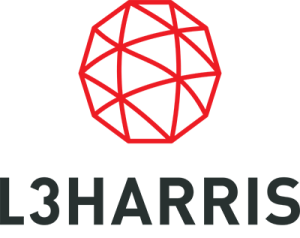Retained vs. Contingency Recruitment: Understanding the Differences

Finding the right executive search firm is more than a procedural step—it’s a strategic decision that directly influences your company’s trajectory. With retained and contingency recruitment firms offering varied approaches, knowing the right fit for your needs is essential. So, what sets these models apart, and how can identifying the right one be a game-changer for your business?
Defining the Models
Before diving deeper into the nuances of retained and contingency recruitment, it’s critical to outline what each model entails and the specific contexts in which they are traditionally utilized.
What is Retained Recruitment?
Retained recruitment is characterized by a high level of partnership and commitment between the hiring company and the search firm. This model is predominantly used for senior-level, C-suite positions such as Chief Executive Officer (CEO), Chief Financial Officer (CFO), or other executive roles where a deep understanding of the industry and extensive vetting of candidates is crucial. In this model, the recruitment firm conducts a thorough analysis of the company’s culture and strategic objectives to find a candidate who not only fits the required professional skill set but also aligns with the company’s vision and ethos.
What is Contingency Recruitment?
Contingency recruitment is results-oriented, with payment contingent upon the successful placement of a candidate. This model is utilized for more rapid hiring needs and is suitable for positions such as middle management or specialized technical roles like IT professionals, sales managers, or engineers. Recruiters working on a contingency basis often manage multiple client searches simultaneously, leveraging their extensive candidate networks to fill positions efficiently and effectively.
Strategic Benefits of Each Model
In the competitive landscape of talent acquisition, understanding when to deploy retained or contingency recruitment strategies can dramatically influence the success of your hiring efforts. Each model offers distinct advantages tailored to different hiring scenarios, emphasizing the strategic depth of one and the agility of the other.
When to Choose Retained Recruitment
Opting for retained recruitment becomes strategically imperative in scenarios where the stakes are high, and the need for precision in candidate alignment is paramount. This model is particularly effective in:
- Filling Senior or C-level Positions: The leadership chosen through retained recruitment can define the trajectory of an entire organization. In such high-stake roles, including CEOs or CFOs, a comprehensive search that includes deep market insights and thorough candidate evaluation ensures alignment not just with the present requirements but also with future organizational strategies.
- Handling Niche or Specialized Roles: Fields requiring specialized expertise, such as aerospace engineering, cybersecurity in defense sectors, or high-level project management in technology firms, benefit immensely from retained recruitment. This approach allows for targeted searches in specific talent pools, ensuring candidates possess not only the necessary skills but also a deep contextual understanding of the industry.
- Ensuring Cultural and Strategic Fit: Retained searches are structured to evaluate candidates beyond their resumes. They assess how well a candidate’s values, leadership style, and long-term career goals align with the organization’s culture and strategic direction, promoting enduring success and integration.
For instance, in aerospace executive search, a retained search for a Chief Technology Officer would rigorously evaluate candidates who not only meet the technical and leadership requirements but also share the company’s vision for innovation and growth. This meticulous approach is crucial in sectors where the impact of leadership extends across the organization and into the broader industry landscape.
Advantages of Contingency Recruitment
Contingency recruitment, with its no-success-no-fee model, offers distinct advantages in situations requiring high flexibility and speed:
- Rapid Scaling Needs: Industries experiencing rapid growth or seasonal demand spikes, such as retail or consumer services, often require quick staffing. Contingency recruitment efficiently meets these needs by providing a swift influx of candidates, helping businesses scale without the delays associated with more comprehensive search processes.
- Filling Mid-level or Operational Roles: When the role is critical for daily operations but not necessarily strategic for long-term goals—positions like account managers, operational supervisors, or technical support staff—contingency recruitment provides a practical and swift hiring solution.
- High Turnover Positions: In sectors with high turnover rates, such as hospitality or customer service, contingency recruitment is ideal. It allows for rapid hiring to maintain service levels without the financial risks associated with more intensive search processes.
While effective for immediate and operational hiring needs, contingency recruitment might not provide the same level of depth and commitment found in retained searches. However, for companies in sectors like retail or hospitality, where speed and flexibility are more critical than deep strategic alignment, contingency recruitment can be a highly effective strategy.
Understanding these nuances helps companies tailor their recruitment strategy to match their specific needs, ensuring that each hire—whether through retained or contingency recruitment—adds the right value to the organization. For those in high-stakes industries or in need of leaders who can truly drive forward corporate agendas, retained recruitment often provides a more strategic, aligned approach, ensuring investments in leadership yield long-term benefits.
The Financial Implicati ons
The cost strategies involved in recruitment models shape an organization’s approach to hiring, with each model offering unique financial dynamics and implications. The understanding of these financial structures is essential in tailoring the recruitment efforts to meet not only the current operational needs but also the strategic long-term objectives of an organization.
Cost Structure of Retained Recruitment
Retained recruitment is characterized by a structured payment schedule that aligns with the critical phases of the executive search process. This method typically starts with an upfront fee that initiates the search, demonstrating the client’s commitment and the recruiter’s obligation to conduct a dedicated and thorough search. As the search progresses, further payments are structured around key milestones, such as the presentation of a shortlist, the scheduling of interviews with a group of candidates, and the successful placement of a candidate.
This financial model supports an in-depth approach, ensuring a focused search that aligns closely with the client’s strategic needs and long-term goals. It is designed to provide a committed service that invests considerable resources into understanding the company’s culture and requirements to find a candidate who not only fills the position but also enhances the leadership dynamics of the organization. A retained search provides dedicated resources to your team and a commitment to making the best placement, no matter how long it takes.
Payment Model for Contingency Recruitment
In contrast, contingency recruitment is driven by a success-based payment model, where fees are only due upon the successful placement of a candidate. This model eliminates upfront costs, offering a risk-free approach for companies looking to fill multiple roles swiftly or lacking the budget for upfront recruitment costs.
It is particularly advantageous for standard positions where the alignment with strategic goals may not be as critical but speed and volume of hiring take precedence. The contingency model is designed to accommodate high-volume recruitment efficiently, making it an attractive option for quickly scaling teams or filling roles that have a high turnover rate, thus providing a cost-effective solution for many operational hiring needs.
Both models serve distinct purposes and come with their financial strategies that can influence a company’s choice depending on their immediate needs and future aspirations. While contingency recruitment offers flexibility and immediate cost savings, retained recruitment provides a strategic investment in high-quality hires, particularly vital for senior-level positions where the impact of the hire is significant and far-reaching.
Candidate Sources, Candidate Pools, and Deliverables
Both retained and contingency search firms have the same objective – to make placements at your company. The process and approach to reach this objective often differ.
Source of Candidates
In retained search, the executive search firm will operate as your partner and balance speed with accuracy. After a deep dive into your qualifications, requirements, and unique company culture, a retained search firm completes an extensive market analysis to identify potential candidates beyond candidates actively seeking new roles. Recruitment of passive candidates, or candidates contentedly employed, requires a methodical and personalized approach.
In contingency search firms, the recruiters are reliant on an existing network of quick, easy-to-reach candidates who are actively looking for new roles.
When evaluating the best option for your company, it’s important to recognize several factors. First, the importance of the most qualified person for your role, not the most convenient. Second, the stability of the placement and the need for permanence at your company. A candidate easily recruited is a candidate that can often be recruited away again in the future. Finally, the assurance you were provided the slate of candidates that most reflected the requirements for the role beyond objective background and experience qualifiers, but rather, the best cultural fit for your unique organization.
Candidate Pool
Much like a sales pursuit, recruitment operates within pipelines. Due to the nature of contingency firms to take a large volume of projects to increase the likelihood of payment, candidate pools are often limited to 20-30 resumes from their existing database for your search.
This is a key difference with retained firms, as executive retained search casts a wider net and are equipped with the resources to access a larger, more diverse candidate pool. At BOB Search, our niche focus on aerospace, defense, and space allows us to leverage our network of successful candidates for referrals and recommendations toward candidates that are hidden from LinkedIn results. Typically, our pipelines are between 150-300 profiles to ensure the best possible fit.
What to Expect: Contingency versus Retained
Expect different quality of evaluation and deliverables from these models.
High volume recruitment for lower level positions at contingency firms will limit recruiters to superficial screens to ensure candidates meet the basic qualifications. You can expect to receive a shortlist of candidates and a batch of resumes.
Retained search provides a more elevated assessment process for candidates, which are necessary for executive placements. Not only do we provide a comprehensive, detailed report on your business, the role, and your requirements; we complete candidate reports equipped with work histories, compensation reports, and matrices to highlight key differences within the slate. You are assigned a dedicated partner throughout the entirety of the project that will support the process to ensure you have identified the correct placement.
Comparing the value of these models is dependent on your needs and priorities, the level of the position being filled, and the complexity of the search.
Retained search models offer a personalized and attentive service, dedicating more time and resources to understanding your needs, and supporting you throughout the entire process. This value is demonstrated for clients seeking to fill senior-level or highly specialized positions where finding the right candidate is critical to your organization’s success.
With a retained firm, you can expect a higher caliber of candidate quality. We have access to industry leaders, we build a broader, more diverse candidate pool with active and passive candidates, and our evaluation ensures these candidates are representative of your requirements.
At BOB Search, we excel in retained recruitment, dedicating our resources to deeply understand your company’s goals and culture, ensuring the leaders we place are poised to drive profound, long-term impact. Contact us today!

























